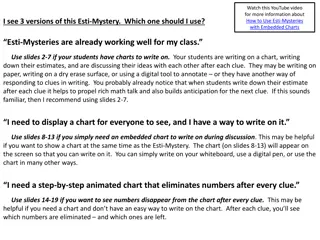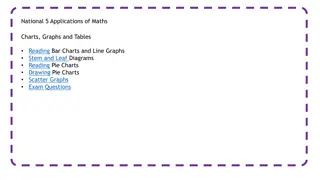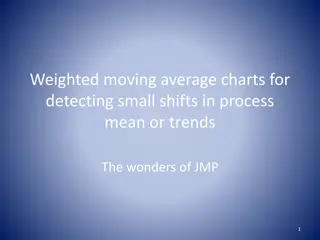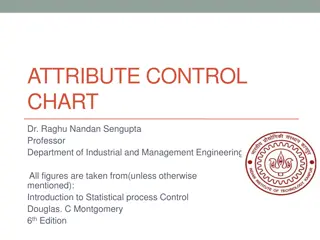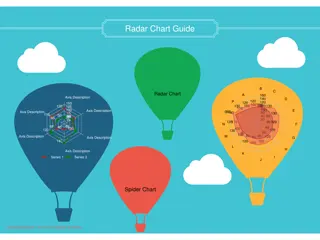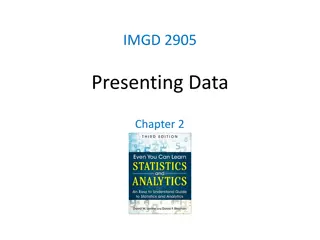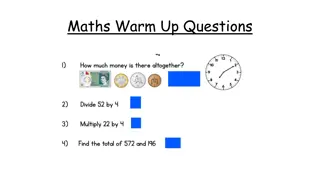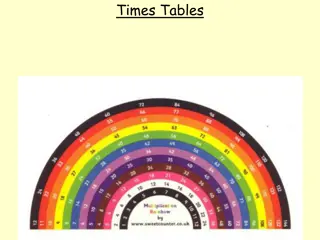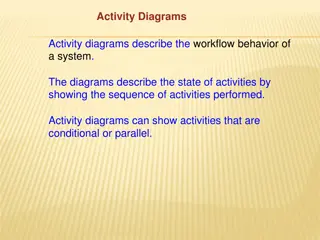Business Mathematics: Various Bar Diagrams and Charts Explained
This comprehensive guide covers the concepts of sub-divided bar diagrams, duo-directional bar diagrams, sliding bar diagrams, and pie charts in Business Mathematics. It includes definitions, examples, and solutions to help understand how to represent data effectively using these graphical tools. Ms. Bhanu Sachdeva, Assistant Professor at Commerce and Management Department, College-I. B(PG). college, Panipat, curated the content with a focus on practical applications.
Download Presentation

Please find below an Image/Link to download the presentation.
The content on the website is provided AS IS for your information and personal use only. It may not be sold, licensed, or shared on other websites without obtaining consent from the author.If you encounter any issues during the download, it is possible that the publisher has removed the file from their server.
You are allowed to download the files provided on this website for personal or commercial use, subject to the condition that they are used lawfully. All files are the property of their respective owners.
The content on the website is provided AS IS for your information and personal use only. It may not be sold, licensed, or shared on other websites without obtaining consent from the author.
E N D
Presentation Transcript
Class B.Com-II semester Subject-Business Mathematics Topic-Sub Divided Bar Diagrams,Duo Directional Bar Diagrams,Sliding Bar Diagrams and Pie charts Prepared By Ms.Bhanu Sachdeva (Assistant Professor) Department- Commerce and management College-I.B(PG) college Panipat,Affiliated to Kurukshetra University,Kurukshetra
Definition:In drawing such diagrams, First bars are drawn for total sum of values of different variables and then these bars are divided to show various components of variables.Different parts of bars must be distinguished by different shades or colours
Example:Represent the following data by a sub-divided bar diagram Years Years Year Production (million tonnes Year Production (million tonnes) ) Year Production (million tonnes Year Production (million tonnes) ) Year Production (million tonnes Year Production (million tonnes) ) Year Production (million tonnes Year Production (million tonnes) ) Wheat 10 13 Cotton 8 9 Rice 4 5 Total 22 27 2017 2018
30 25 20 Production Rice Cotton Wheat 15 10 5 0 2017 2018 years years
Duo-Directional Bar Diagrams :These diagrams are drawn to represent two different attributes. The bars can have both positive and negative values. Positive values are shown above and negative values are shown below the base line.
Example:Represent the following data by a Duo-Directional Diagram. 2011 70 2011 2012 -35 2012 2013 2013 -45 2014 2014 20 2015 2015 30 2016 -10 2016 2017 35 2017 2018 55 2018 Years Variation Years
Solution:Duo-Directional Diagram Showing Variation in Different Years is as Given Below 80 60 40 20 0 2011 2012 2013 2014 2015 2016 2017 2018 -20 -40 -60
Sliding-Bar Diagram:In these type of diagrams,the length of a bar is taken to be 100.on one side of base line the percentage of one part is shown and on other side of base line the percentage of other part is shown.
Example:Represent the following data by a sliding bar diagram. Years 2015 Years Pass % 70 Pass % Fail % 30 Fail % 2016 2017 2018 85 90 65 15 10 35
2018 2017 Pass % Fail % 2016 2015 -50 0 50 100
Pie chart:In these the total quantity is distributed over one complete circle or 3600.This angle 3600 is divided into a number of small angles whose degrees will be proportional to the values of component.
Find fraction by dividing the value of each element by total (sum) of values of all elements Multiply this fraction by 3600 Draw a circle and then draw angles obtained in step 2 at centre of circle Different part of circle may be shaded differently or with different colour and highlights the different values.
Example:Represent the following data by Pie Diagram Subject No.of students Subject Eng 45 Eng Maths 60 Maths Physics 20 Physics Chemistry 30 Chemistry Economics 10 Economics Commerce Commerce 15 Solution:To draw the pie chart,we first calculate the angle at centre as shown in the following table The pie chart is obtained by marking the angles obtained in the above table at centre of the circle
Subject Subject NO.of NO.of students students Fraction total 45/180 60/180 20/180 30/180 10/180 15/180 Fraction of total of Angle at centre Angle at centre English Maths Physics Chemistry Economics Commerce Total Total 45 60 20 30 10 15 180 45/180*3600=900 60/180*3600 =1200 20/180*3600 = 400 30/180*3600 =600 10/180*3600 =200 15/180*3600=300 The pie chart is obtained by marking the angles obtained in the above table at centre of the circle The pie chart is obtained by marking the angles obtained in the above table at centre of the circle Eng Math Physics Chemistry Economics commerce 20 30 90 60 40 120


